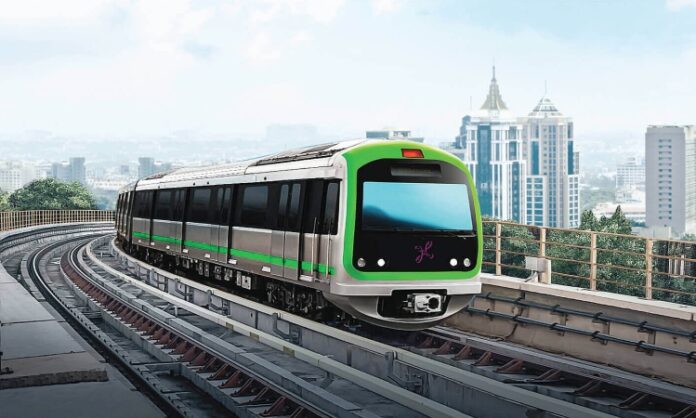Bengaluru: Namma Metro, operated by Bangalore Metro Rail Corporation Limited (BMRCL), has experienced a significant increase in ridership as commuters seek to avoid the city’s notorious traffic congestion. Over the past six months, an additional 7 lakh passengers have been added each month, resulting in a remarkable surge in the number of people utilizing the metro system. This surge in popularity can be attributed to both the expansion of routes and the gradual return of employees from the IT sector to their workplaces.
Rapid Growth in Passenger Numbers
The ridership statistics for Namma Metro have been steadily climbing, with a notable increase in the number of passengers recorded each month. According to the reports, in February, 1.46 crore people travelled via the metro, which rose to 1.60 crores in March, 1.71 crore in April, 1.74 crores in May, 1.81 crores in June and 1.89 crores in July. The month of July witnessed a remarkable milestone, with 1.89 crore passengers utilizing the metro. Overall, there has been a staggering increase of more than 21 lakh passengers from February to July, said a senior officer of BMRCL.
Also Read: Patna Metro to become operational by 2026-27, 2nd TBM launched
Currently, Namma Metro operates on a route spanning 69.66 km, and this is set to expand further by an additional 26.40 km by the end of this year.
The purple line, connecting Challaghatta to Whitefield, will be fully operational, along with the RV Road-Bommasandra Yellow Line (19.15 km) and Nagasandra-Madavara Green Line (3 km). These expansions are expected to cater to the growing demand and facilitate smoother travel for commuters.
Projected Passenger Numbers
With an average of 5.70 lakh daily commuters presently, Namma Metro aims to reach an average of 8 lakh passengers per day by the end of the year. This projection takes into account the gradual reduction of work-from-home arrangements for IT employees, coupled with the expansion of metro routes. The convenience and efficiency offered by the metro system have undoubtedly contributed to its increasing popularity among Bengaluru residents.
Also Read: 6 Namma metro stations’ names changed ahead launch of new line
Pre and Post-COVID Comparisons
Before the Covid-19 pandemic, Namma Metro witnessed an average of 4 lakh daily passengers. However, this number dropped to 2 lakhs during the height of the pandemic. Despite the challenges posed by the pandemic, the metro system has managed to bounce back and even surpass its pre-COVID ridership figures. The expansion of the metro line from 57 km to 69 km has played a crucial role in attracting more commuters.
Financial Impact
In terms of revenue, Namma Metro experienced a decline during the lockdown period. In December 2019, the metro generated a revenue of ₹33.39 crore from 1.24 crore passengers. However, in November 2021, after the lifting of lockdown restrictions, only 81.51 lakh people travelled, resulting in a revenue of ₹20.41 crore due to work from home option. The numbers improved in December, with 96.50 lakh passengers and revenue of ₹23.12 crore.
Also Read: Delhi metro rail introduces QR code-based ticketing system
Namma Metro’s remarkable growth in passenger numbers is a testament to its importance as a reliable and efficient mode of transportation in Bengaluru. The expansion of routes and the gradual return of employees to their workplaces have contributed significantly to this surge in popularity. With further expansions planned and an expected increase in daily commuters, Namma Metro is poised to become an even more integral part of the city’s transportation infrastructure.
Last six months’ ridership and revenue
| Months (2023) | Ridership | Revenue in ₹ |
| February | 1.46 Cr | 34.90 Cr |
| March | 1.60 Cr | 38.36 Cr |
| April | 1.71 Cr | 41.10 Cr |
| May | 1.74 Cr | 43.45 Cr |
| June | 1.81 Cr | 39.97 Cr |
| July | 1.89 Cr | 43.77 Cr |




